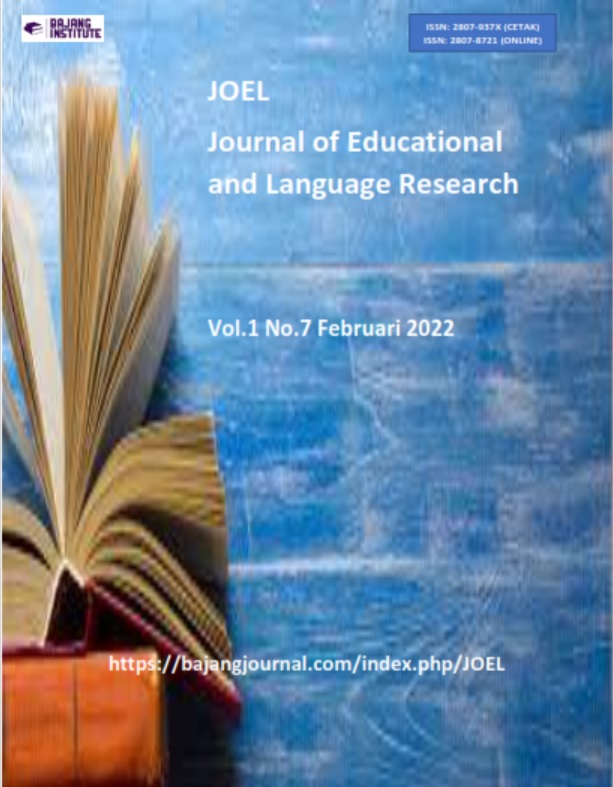MEANING COMPLEXITY IN THE QUR'AN:MICROLINGUISTIC STUDY IN AL-NAAS VERSE
DOI:
https://doi.org/10.53625/joel.v1i7.1477Keywords:
Al-Naas, Microlinguistics, MeaningAbstract
This paper aims to find out whether the meaning in the Qur'an is single or complex. Especially in the verse Al-Naas. In discussing this problem the author uses qualitative methods with microlinguistic analysis. Here the author uses four branches of the science of microliguistics, namely Phonology, Morphology, Syntax and Semantics. The results of the study show that; 1) Judging from the phonology, the final sound of each verse in Surat Al-Naas contains poetic elements so that people who listen to it will feel interested in reading it and learn deeper meaning. 2) Viewed from the Morphology, the verbs used in this verse are mostly in the form of fi'il mudhori '(which has present and future meanings), this indicates that this verse has properties for a time that is not determined and is always read from time to time without knowing certain times. 3) In terms of the syntax, laying the word أعوذ in the first verse and the word يوسوس in the fifth verse shows that humans are encouraged to always ask for protection from Allah without having to wait for those evil whispers to come to him. 4) In terms of its semantics, the words in the verse Al-Naas have certain meanings, for example the word رب (maintainer, regulator), this word is placed at the beginning of the verse after the word أعوذ because this word is general which applies to all beings, be it living creatures and dead creatures, be they creatures that do not appear to be eyes or creatures that appear to be eyes, whether they worship them or do not worship them. The conclusions that can be drawn from this paper are; the use of a particular branch of science in analyzing a text will produce certain meanings, the more branches of knowledge used the more diverse the results will be.
References
Al-Qur'an: Terjemah dan Tafsir per Kata. Bandung: Jabal, 2010.
Ambarini AS. Semiotika Teori dan Aplikasi Pada Karya Sastra. Semarang: IKIP PGRI Semarang Press, tt.
Azwar, Saifuddin. Metode Penelitian. Cet. VI. Yogyakarta: Pustaka Pelajar, 2005.
Emar Maier. Belief in Context: Towards a Unified Semantics of staff and Attitude Reports. Enschede: Print Partners Ipskamp, 2006.
Hanif Fathoni, “Pembentukan Kata Dalam Bahasa Arab: Sebuah Analisis Morfologis “K-T-B” dalam Jurnal At-Ta’dib, Volume 8 Number 1 June 2013.
Kaelan. Filsafat Bahasa Semiotika dan Hermeneutika. Yogyakarta: Paradigma, 2009.
Lubis, Nur A. Fadhil. Pengantar Filsafat Umum. Medan: Perdana Publishing, 2015
M. Ramlan. Morfologi: Suatu Tinjauan Deskriptif. Yogyakarta: CV Karyono, 2001.
Moch. Mu’izzudin. “Analisis Fonologi Bahasa Arab: Tinjauan Linguistik Modern” dalam Jurnal Al-Qalam. Volume 19 Number 93. June 2002
Tarigan, Henri Guntur. Pengajaran Morfologi. Bandung: Angkasa, 1995.











